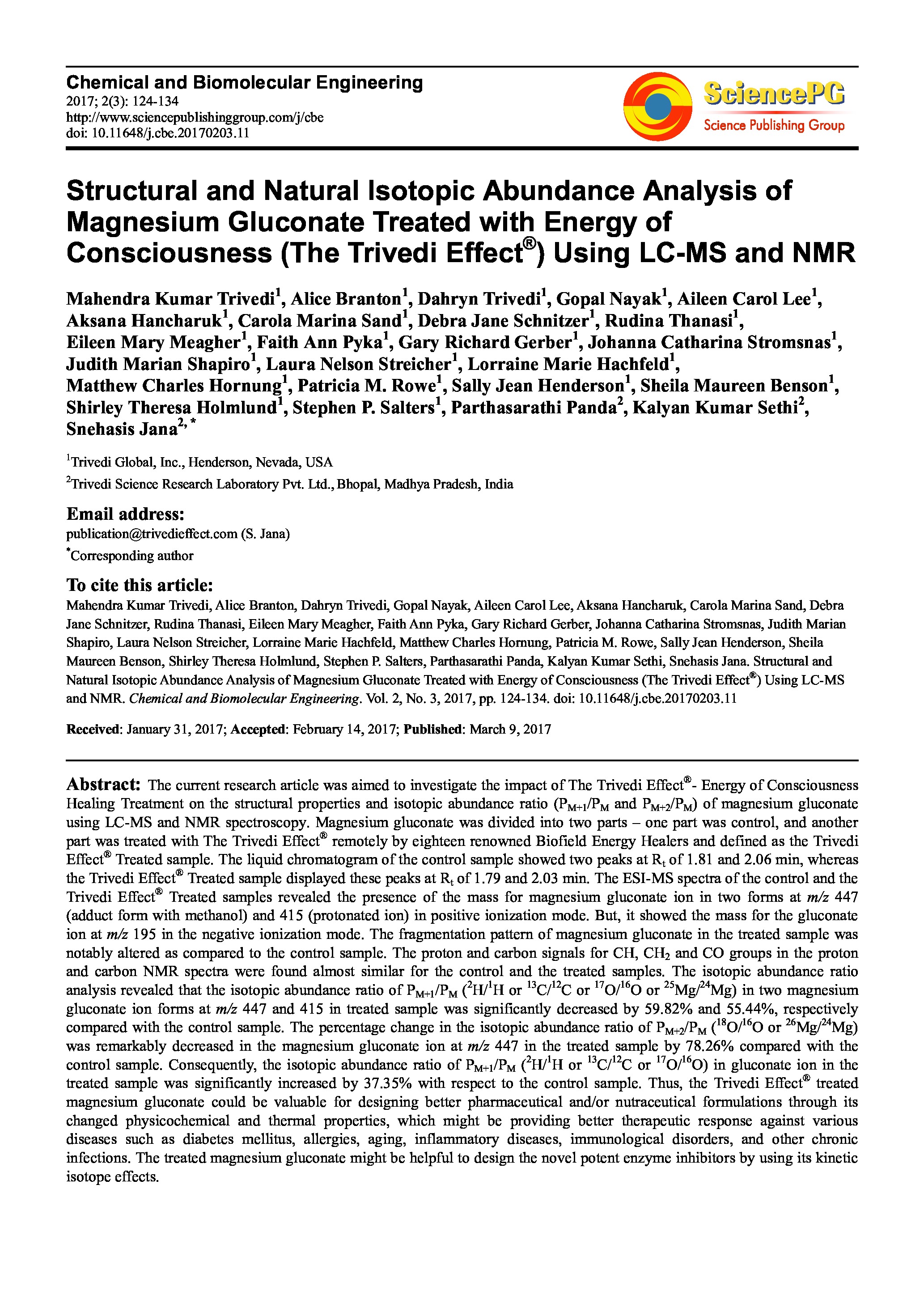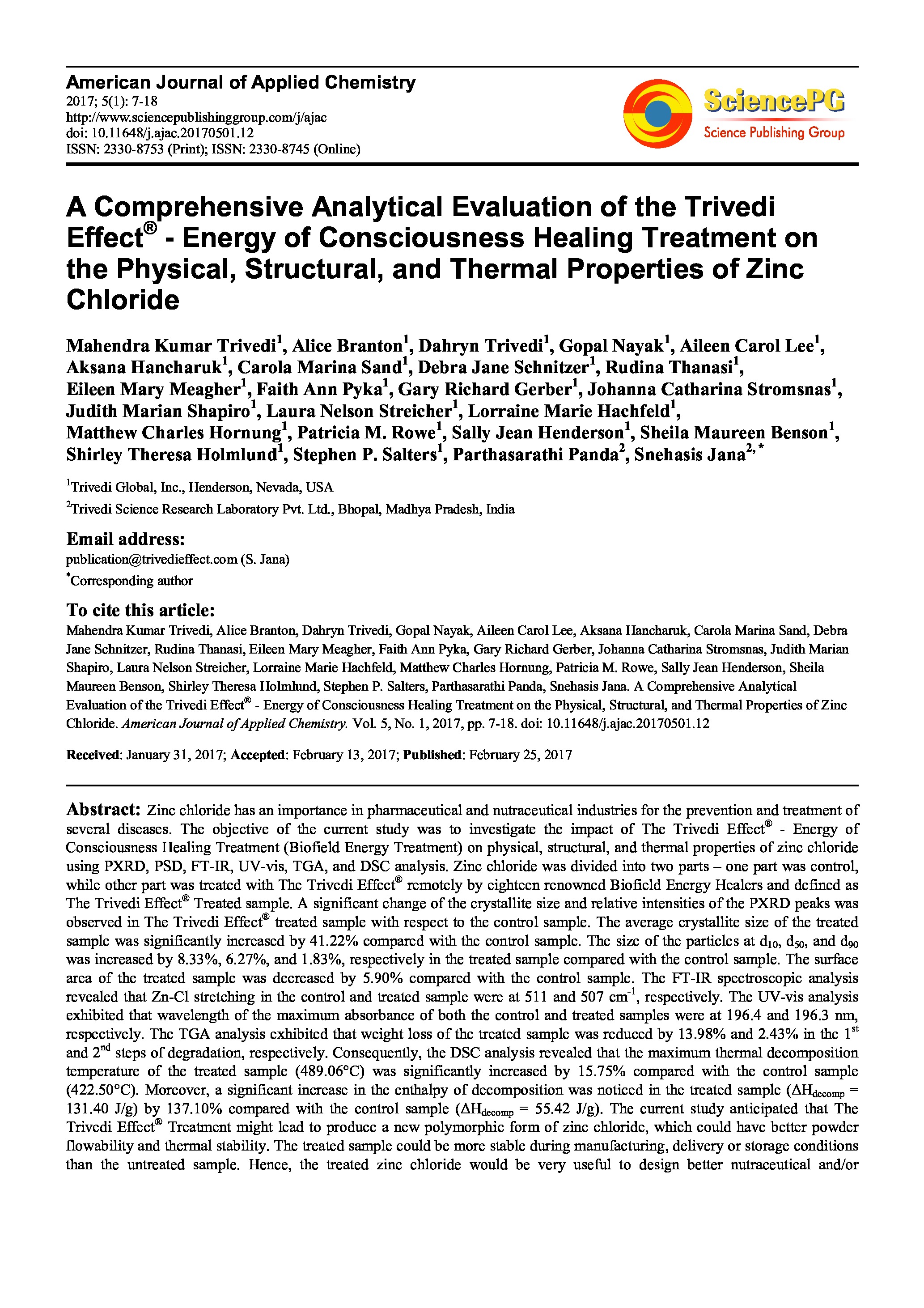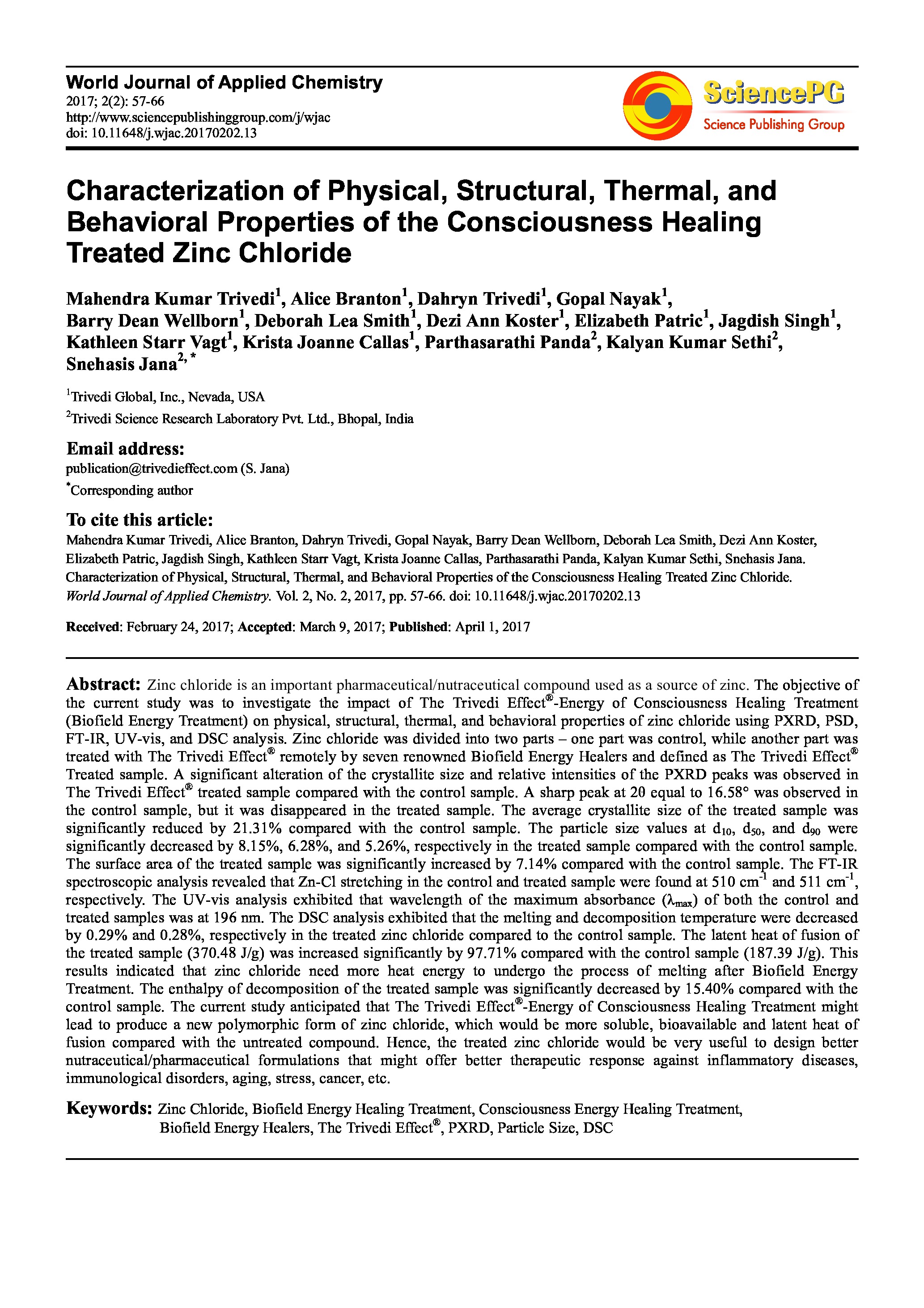Date of upload:
05.07.2017
Co-author:
Mahendra Kumar Trivedi, Dahryn Trivedi, Gopal Nayak, Aileen Carol Lee, Aksana Hancharuk, Carola Marina Sand, Debra Jane Schnitzer, Rudina Thanasi, Eileen Mary Meagher, Faith Ann Pyka, Gary Richard Gerber, Johanna Catharina Stromsnas, Judith Marian Shapiro, Laura Nelson Streicher, Lorraine Marie Hachfeld, Matthew Charles Hornung, Patricia M. Rowe, Sally Jean Henderson, Sheila Maureen Benson, Shirley Theresa Holmlund, Stephen P. Salters, Parthasarathi Panda, Snehasis Jana
Abstract:
Sodium selenate is used for the prevention and treatment of various disorders like cancer, diabetes, inflammation diseases, etc. The objective of the current study was to evaluate the effect of The Trivedi Effect®-Energy of Consciousness Healing Treatment (Biofield Energy Treatment) on physicochemical, spectral, and thermal properties of The Trivedi Effect®-Biofield Energy Treated sodium selenate using various analytical methods such as PXRD, PSD, FT-IR, UV-vis spectroscopy, TGA, and DSC analysis. Sodium selenate was divided into two parts – one part was control without any treatment and another part was treated with The Trivedi Effect®-Biofield Energy Healing Treatment remotely by eighteen renowned Biofield Energy Healers and defined as The Trivedi Effect®-Energy of Consciousness Healing Treated sample. The PXRD analysis showed the significant alteration of the crystallite size of the treated sample in the range of -36.36% to 133.24% as compared to the control sample. However, the average crystallite size of the treated sample was significantly decreased by 8.31% as compared to the control sample. Overall, the crystal morphology of the treated sample was different from the control sample. The particle sizes d10, d50, and d90 values of the treated sample were significantly decreased by 3.40%, 9.75%, and 8.52%, respectively as compared to the control sample. Consequently, the surface area of the treated sample was significantly increased by 5.26% from the control sample. Both the control and treated FT-IR spectra indicated the presence of sharp and strong absorption bands at 887 cm-1 due to the Se=O stretching. The UV-vis spectroscopic analysis displayed that the wavelength for the maximum absorbance of both the control and treated samples were at 204.1 and 204.0 nm, respectively. TGA analysis revealed that the total weight loss of the treated sample was reduced by 1.24% as compared with the control sample. The DSC analysis showed that the treated sample (588.77°C) had higher melting point than the control sample (588.60°C). The latent heat of fusion was reduced in the treated sample by 8.01% compared to the control sample. Thus, The Trivedi Effect®-Biofield Energy Healing might lead to generate a new polymorphic (enantiotropic) form of sodium selenate which would be more soluble, bioavailable, and thermally stable compared with the untreated sample. The Trivedi Effect treated sodium selenate would be very useful to design better nutraceutical and/or pharmaceutical formulations that might offer better therapeutic response against inflammatory diseases, immunological disorders, stress, aging, infectious diseases, cancer, diabetes, heart diseases, Alzheimer’s disease, etc.




